Modeling and Characterization of Capacitive Coupling Intrabody Communication in an In-Vehicle Scenario
Abstract
:1. Introduction
2. Capacitive Coupling IBC System
2.1. Capacitive Coupling IBC Model in a Metallic-Enclosed Environment
2.2. Detection System Model
3. Simulation of Capacitive Coupling IBC in an In-Vehicle Scenario
3.1. FEM Simulation Model and Setup
3.2. Simulation Results and Discussion
4. Experimental Validation
4.1. Transceiver
4.2. Measurement Setup
4.3. Results and Discussion
5. Conclusions
Author Contributions
Funding
Conflicts of Interest
References
- Carlos-Mancilla, M.; López-Mellado, E.; Siller, M. Wireless sensor networks formation: Approaches and techniques. J. Sens. 2016, 2016, 2081902. [Google Scholar] [CrossRef]
- Li, J.; Liu, Y.; Nie, Z.; Qin, W.; Pang, Z.; Wang, L. An approach to biometric verification based on human body communication in wearable devices. Sensors 2017, 17, 125. [Google Scholar] [CrossRef] [PubMed]
- Gao, Y.M.; Wu, Z.M.; Pun, S.H.; Mak, P.U.; Vai, M.I.; Du, M. A novel field-circuit FEM modeling and channel gain estimation for galvanic coupling real IBC measurements. Sensors 2016, 16, 471. [Google Scholar] [CrossRef]
- Seyedi, M.; Kibret, B.; Lai, D.T.; Faulkner, M. A survey on intrabody communications for body area network applications. IEEE Trans Biomed. Eng. 2013, 60, 2067–2079. [Google Scholar] [CrossRef] [PubMed]
- Cho, N.; Yoo, J.; Song, S.-J.; Lee, J.; Jeon, S.; Yoo, H.-J. The human body characteristics as a signal transmission medium for intrabody communication. IEEE Trans. Microw. Theory Tech. 2007, 55, 1080–1086. [Google Scholar] [CrossRef]
- Callejon, M.A.; Reina-Tosina, J.; Naranjo-Hernandez, D.; Roa, L.M. Galvanic coupling transmission in intrabody communication: A finite element approach. IEEE Trans. Biomed. Eng. 2014, 61, 775–783. [Google Scholar] [CrossRef] [PubMed]
- Nie, Z.D.; Ma, J.J.; Li, Z.C.; Chen, H.; Wang, L. Dynamic propagation channel characterization and modeling for human body communication. Sensors 2012, 12, 17569–17587. [Google Scholar] [CrossRef]
- Cho, H.; Lee, H.; Bae, J.; Yoo, H.J. A 5.2 mW IEEE 802.15.6 HBC standard compatible transceiver with power efficient delay-locked-loop based BPSK demodulator. IEEE J. Solid-State Circuits 2015, 50, 2549–2559. [Google Scholar] [CrossRef]
- Pereira, M.D.; Alvarez-Botero, G.A.; Rangel de Sousa, F. Characterization and modeling of the capacitive HBC channel. IEEE Trans. Instrum. Meas. 2015, 64, 2626–2635. [Google Scholar] [CrossRef]
- Zhu, X.Q.; Guo, Y.X.; Wu, W. Investigation and modeling of capacitive human body communication. IEEE Trans. Biomed. Circuits Syst. 2017, 11, 474–482. [Google Scholar] [CrossRef]
- Ying, C.Z.; Ming, G.Y.; Min, D. Multilayer distributed circuit modeling for galvanic coupling intrabody communication. J. Sens. 2018, 2018, 8096064. [Google Scholar]
- Bae, J.; Cho, H.; Song, K.; Lee, H.; Yoo, H.J. The signal transmission mechanism on the surface of human body for body channel communication. IEEE Trans. Microw. Theory Tech. 2012, 60, 582–593. [Google Scholar] [CrossRef]
- Mao, J.; Yang, H.; Lian, Y. A self-adaptive capacitive compensation technique for body channel communication. IEEE Trans. Biomed. Circuits Syst. 2017, 11, 1001–1012. [Google Scholar] [CrossRef] [PubMed]
- Xu, R.; Zhu, H.; Yuan, J. Electric-field intrabody communication channel modeling with finite-element method. IEEE Trans. Biomed. Eng. 2011, 58, 705–712. [Google Scholar] [PubMed]
- Xu, R.; Ng, W.C.; Zhu, H.; Shan, H.; Yuan, J. Equation environment coupling and interference on the electric-field intrabody communication channel. IEEE Trans. Biomed. Eng. 2012, 59, 2051–2059. [Google Scholar] [CrossRef] [PubMed]
- Lucev, Ž.; Krois, I.; Cifrek, M. A Capacitive intrabody communication channel from 100 kHz to 100 MHz. IEEE Trans. Instrum. Meas. 2012, 61, 3280–3289. [Google Scholar] [CrossRef]
- Khademi, S.; Chepuri, S.P.; Irahhauten, Z.; Janssen, G.J.M.; van der Veen, A.-J. Channel measurements and modeling for a 60 GHz wireless link within a metal cabinet. IEEE Trans. Wirel. Commun. 2015, 14, 5098–5110. [Google Scholar] [CrossRef]
- Leung, S.W.; Diao, Y.; Chan, K.H.; Siu, Y.M.; Wu, Y. Specific absorption rate evaluation for passengers using wireless communication devices inside vehicles with different handedness, passenger counts, and seating locations. IEEE Trans. Biomed. Eng. 2012, 59, 2905–2912. [Google Scholar] [CrossRef]
- Zimmerman, T.G. Personal area networks: Near-field intrabody communication. IBM Syst. J. 1996, 35, 609–617. [Google Scholar] [CrossRef]
- Swaminathan, M.; Cabrera, F.; Pujol, J. Multi-path model and sensitivity analysis for galvanic coupled intra-body communication through layered tissue. IEEE Trans. Biomed. Circuits Syst. 2016, 10, 339–351. [Google Scholar] [CrossRef]
- Gabriely, S.; Lau, R.W.; Gabriel, C. The dielectric properties of biological tissues: III. Parametric models for the dielectric spectrum of tissues. Phys. Med. Biol. 1996, 41, 2271–2293. [Google Scholar] [CrossRef] [PubMed] [Green Version]
- Gabriel, C.; Gabriel, S.; Corthout, E. The dielectric properties of biological tissues: I. Literature survey. Phys. Med. Biol. 1996, 41, 2231–2249. [Google Scholar] [CrossRef] [PubMed] [Green Version]
- Nishiyama, H.; Nakamura, M. Form and capacitance of parallel-plate capacitors. IEEE Trans. Compon. Packag. Manuf. Technol. Part A 1994, 17, 477–484. [Google Scholar] [CrossRef] [Green Version]
- Chi, Y.M.; Jung, T.P.; Cauwenberghs, G. Dry-contact and noncontact biopotential electrodes: Methodological review. IEEE Rev. Biomed. Eng. 2010, 3, 106–119. [Google Scholar] [CrossRef] [PubMed]
- Hachisuka, K.; Nakata, A.; Takeda, T.; Terauchi, Y.; Shiba, K.; Sasaki, K.; Hosaka, H.; Itao, K. Development and performance analysis of an intra-body communication device. In Proceedings of the 12th International Conference on Solid-State Sensors, Actuators and Microsystems, Boston, MA, USA, 8–12 June 2003. [Google Scholar]
- Hachisuka, K.; Takeda, T.; Terauchi, Y.; Sasaki, K.; Hosaka, H.; Itao, K. Intra-body data transmission for the personal area network. Microsyst. Technol. 2005, 11, 1020–1027. [Google Scholar] [CrossRef]
- Herbertz, J. Guidelines for limiting exposure to time-varying electric, magnetic, and electromagnetic fields (up to 300 GHz). Health Phys. 1998, 74, 494–522. [Google Scholar]

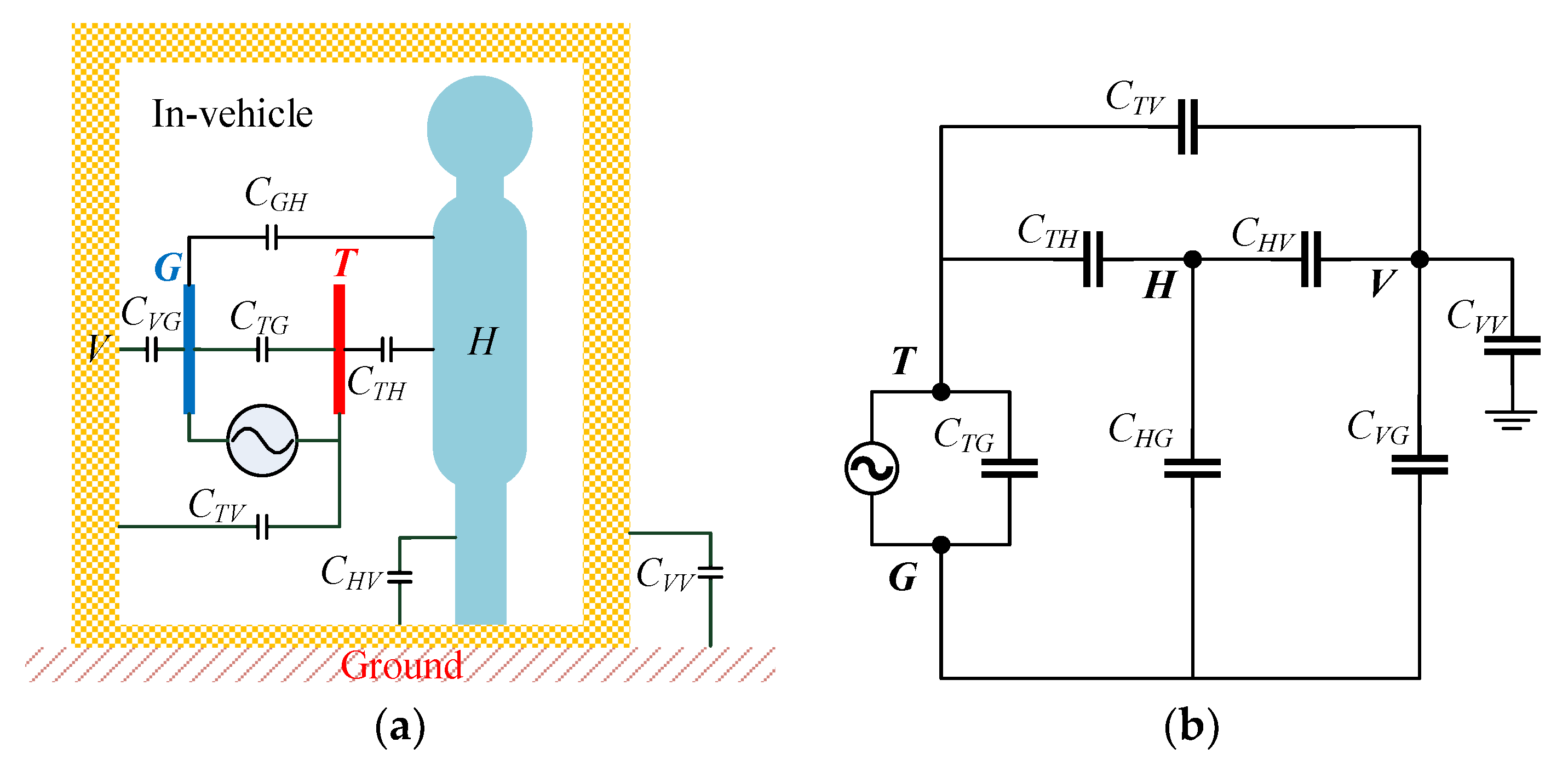
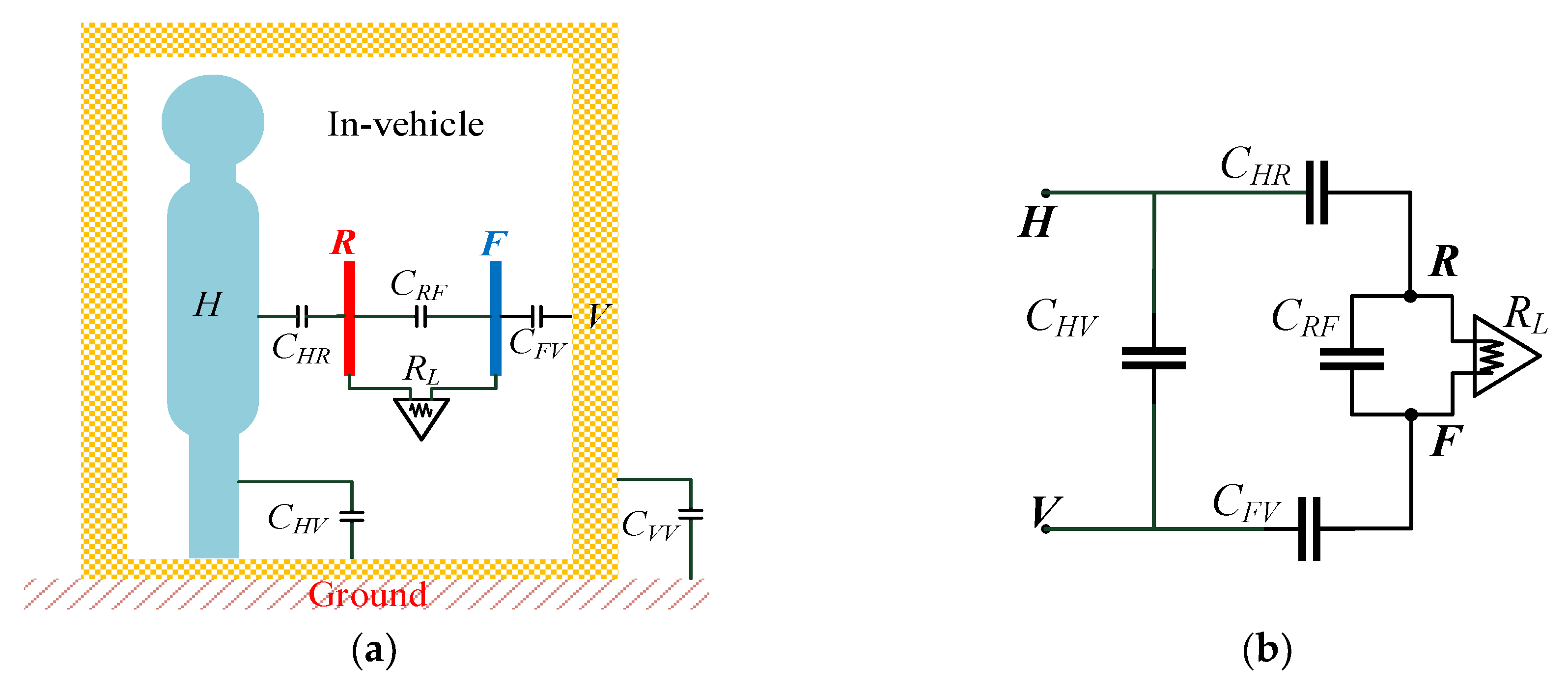
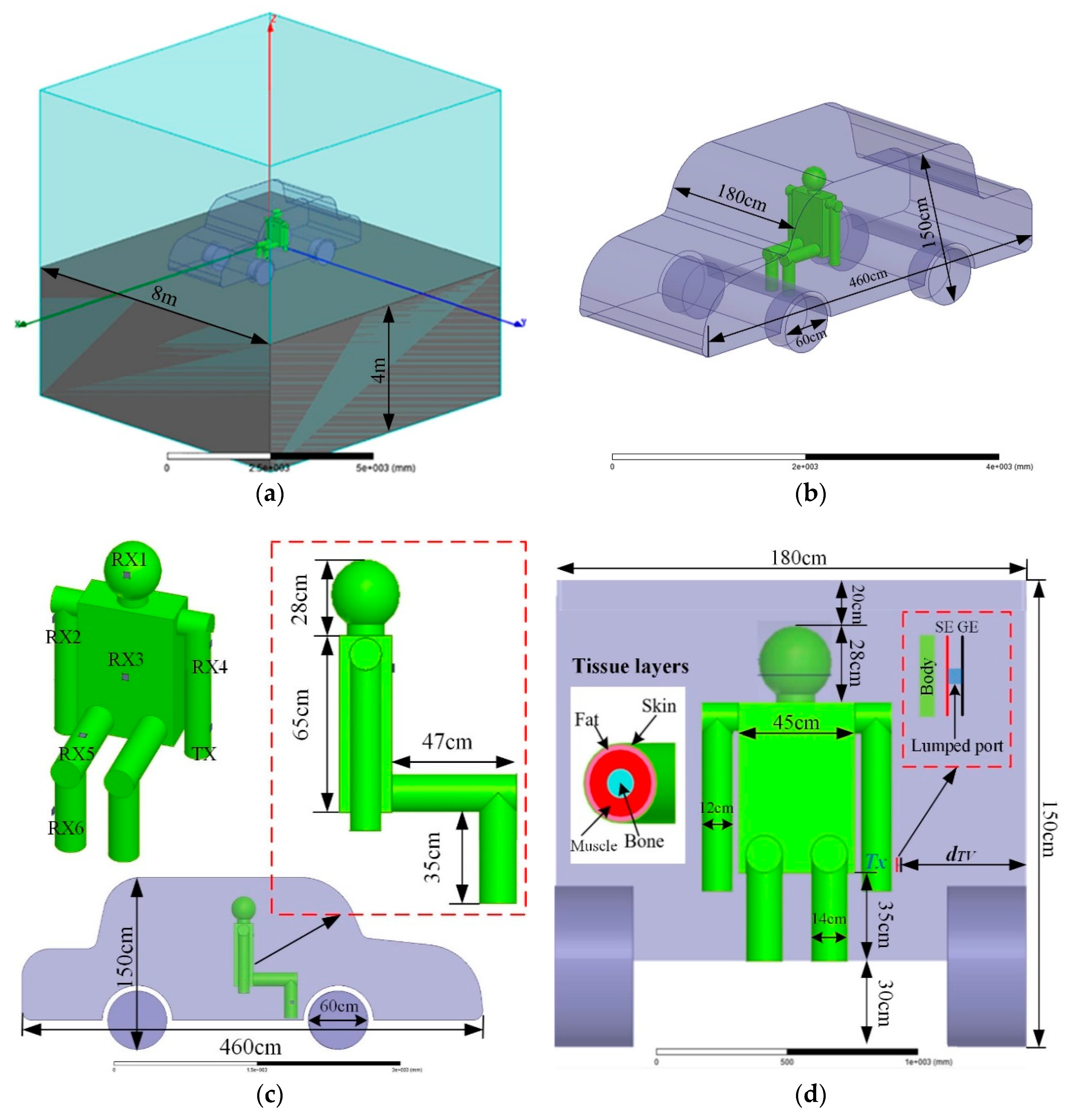

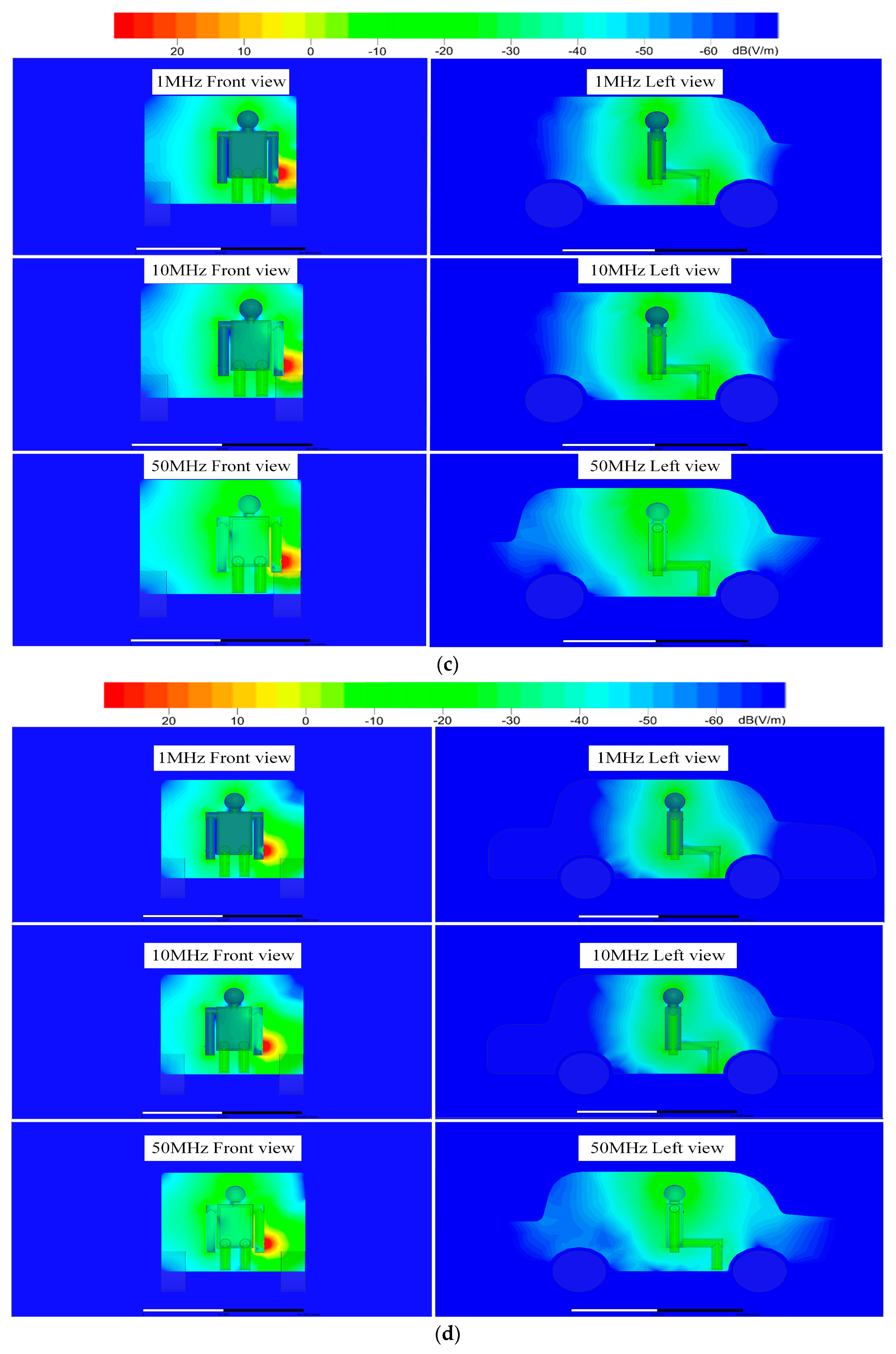
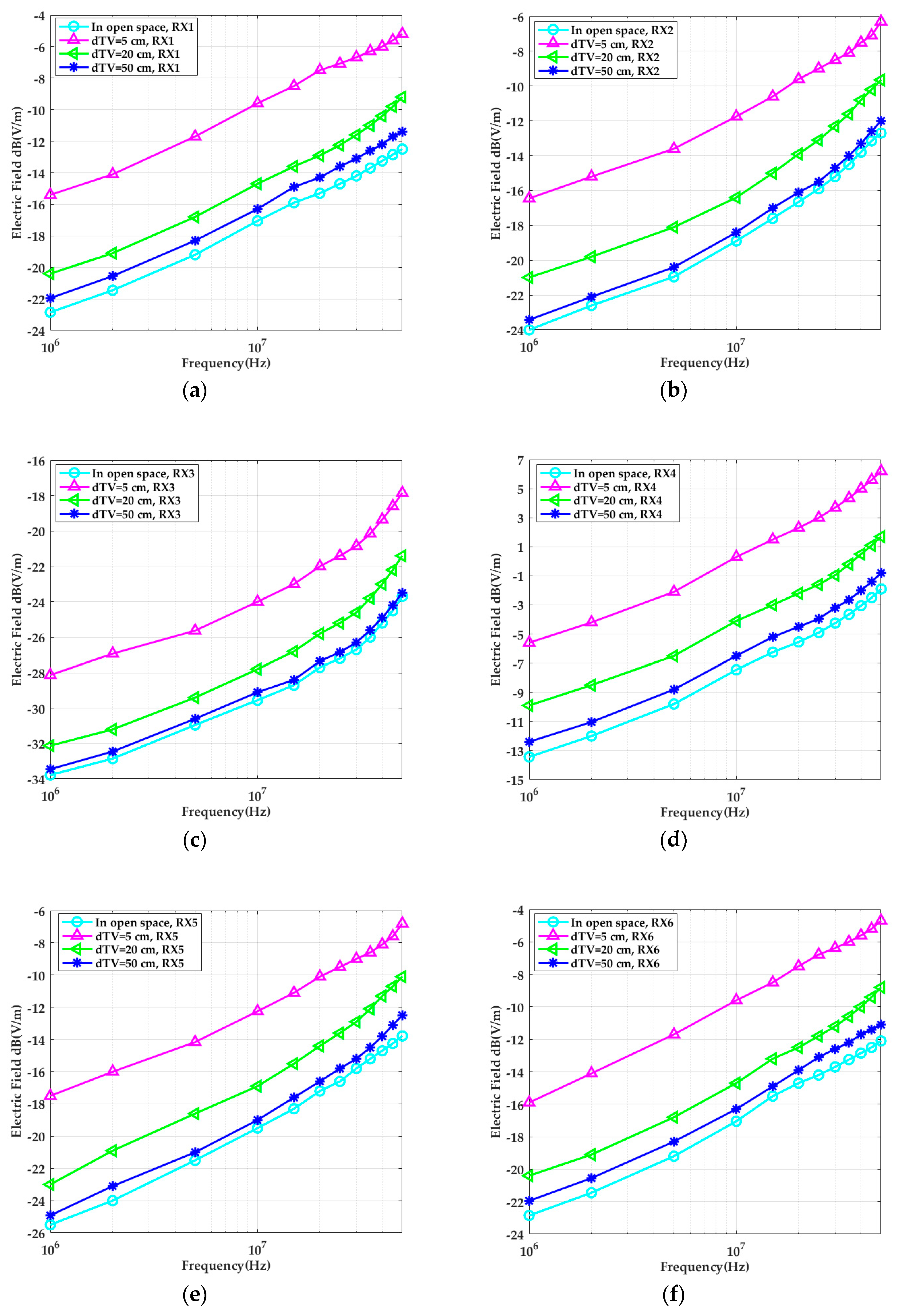


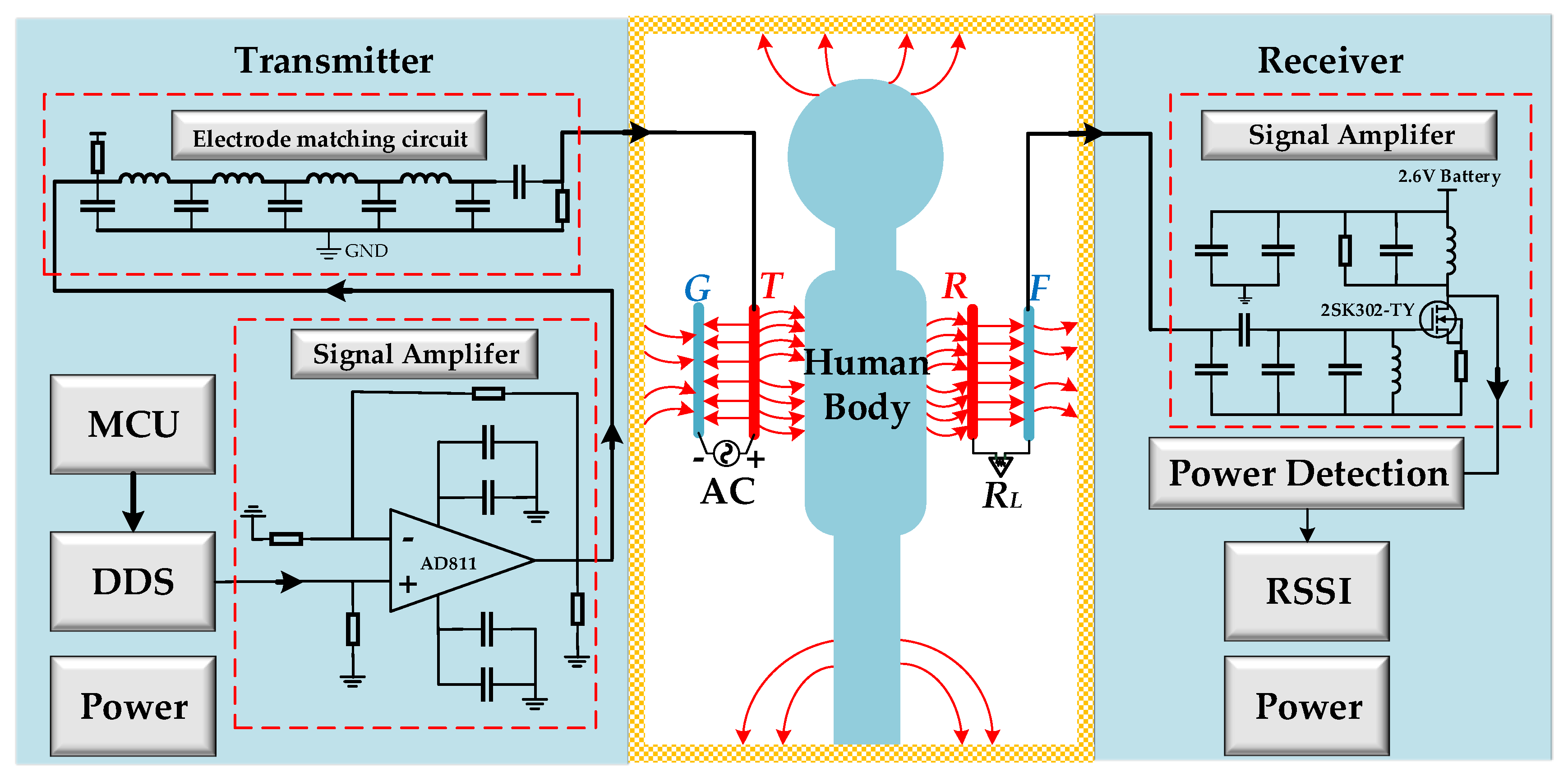


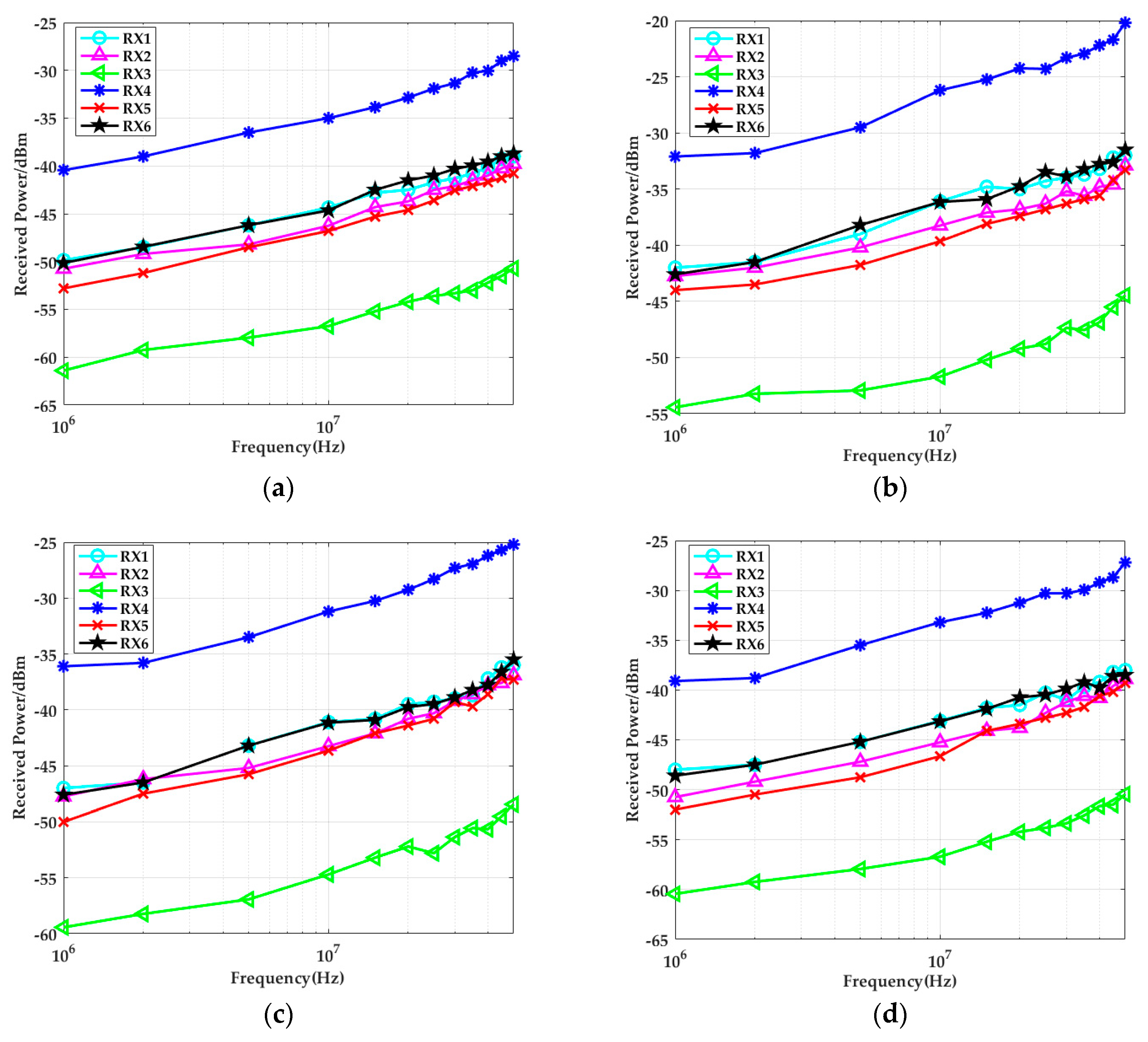
| Tissues | Relative Permittivity εr | Conductivity σ (S/m) | ||||||||
|---|---|---|---|---|---|---|---|---|---|---|
| 1 MHz | 5 MHz | 10 MHz | 20 MHz | 50 MHz | 1 MHz | 5 MHz | 10 MHz | 20 MHz | 50 MHz | |
| skin | 823 | 427 | 362 | 168 | 114 | 0.01 | 0.20 | 0.21 | 0.25 | 0.04 |
| fat | 36 | 17 | 14 | 12 | 11 | 0.03 | 0.03 | 0.03 | 0.03 | 0.04 |
| muscle | 1850 | 363 | 171 | 95 | 32 | 0.51 | 0.6 | 0.62 | 0.64 | 0.68 |
| bone | 187 | 159 | 112 | 109 | 107 | 0.01 | 0.01 | 0.02 | 0.02 | 0.03 |
| Tissues | Head | Neck | Torso | Arm | Leg |
|---|---|---|---|---|---|
| skin | 1.26 | 1.26 | 1.26 | 1.26 | 1.26 |
| fat | 2 | 8.74 | 8.74 | 8.74 | 8.74 |
| muscle | 2 | 42 | 30 | 28 | 34 |
| bone | 10 | 23 | 20 | 22 | 26 |
© 2019 by the authors. Licensee MDPI, Basel, Switzerland. This article is an open access article distributed under the terms and conditions of the Creative Commons Attribution (CC BY) license (http://creativecommons.org/licenses/by/4.0/).
Share and Cite
Xu, Y.; Huang, Z.; Yang, S.; Wang, Z.; Yang, B.; Li, Y. Modeling and Characterization of Capacitive Coupling Intrabody Communication in an In-Vehicle Scenario. Sensors 2019, 19, 4305. https://doi.org/10.3390/s19194305
Xu Y, Huang Z, Yang S, Wang Z, Yang B, Li Y. Modeling and Characterization of Capacitive Coupling Intrabody Communication in an In-Vehicle Scenario. Sensors. 2019; 19(19):4305. https://doi.org/10.3390/s19194305
Chicago/Turabian StyleXu, Yuan, Zhonghua Huang, Shize Yang, Zhiqi Wang, Bing Yang, and Yinlin Li. 2019. "Modeling and Characterization of Capacitive Coupling Intrabody Communication in an In-Vehicle Scenario" Sensors 19, no. 19: 4305. https://doi.org/10.3390/s19194305





